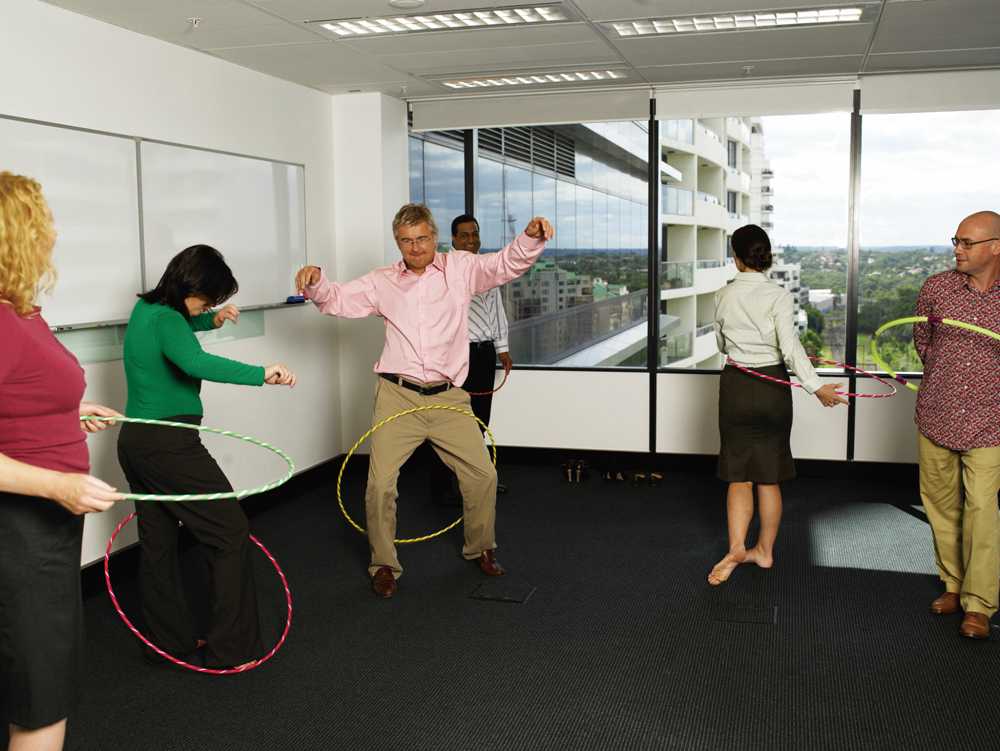
Entrepreneurs like talking about the significance of team spirit in developing businesses. Expressions such as 10*10>100 and Together Everyone Achieves More are common in a great many management books. However, my question is how can managers expect positive results to improve by a factor of 10 from a team of 10 employees? The widely-known answer is that employers who hire 10 people for a team have to get them to work together effectively. Unfortunately, some managers find fostering team collaboration fairly difficult. If a team meal is the beginning, what more can managers do to bind the team together? To answer the question, I would like to share some interesting outdoor activities that are helpful for team building.
Outward Bound activities help to bind individuals into a cohesive team. Originating in Europe, these activities have become more and more popular in China in recent years, and are part of many Chinese companies’ team building strategies. So what is Outward Bound and how can it help increase team cohesion?
In fact, Outward Bound is less common in European countries than scouting which is a popular activity among children. Many parents send their children to summer and winter scouting camps where children can learn not only survival skills but also the importance of team effort. Some people think that Outward Bound training is simply an activity for the young. However, from a team management perspective, Outward Bound experiences are exactly what a lot of employees need to learn about being part of a team. So I would like to move on to the benefits of Outward Bound and how the activity is helpful to increase team collaboration.
Outward Bound training facilitates individual and social development through experiential learning in the outdoors. It comes from the experience during the Second World War. Lawrence Holt, partner of a large merchant shipping enterprise, thought that the deaths of thousands of sailors in the Battle of the Atlantic were partly caused by the faulty training provided. So, together with Kurt Hahn, he planned to start a new type of one-month training to help young British sailors develop physical fitness, enterprise, tenacity and compassion. Later on, this training program was officially named as Outward Bound. Since 1941, the training has evolved but never departed from the original concept of an intense experience surmounting challenges in a natural setting, through which individuals can foster personal growth and social skills by taking challenging expeditions in outdoor activities.
In this regard, let me talk about strengths of Outward Bound in team building. The first strength I would say is that certain training programs are very helpful in breaking down the Silo Mentality among people and business units. The Silo Mentality is one of the biggest obstacles for a lot of senior managers in team building. Let me take one of my interview experiences with a sales candidate as an example. A few months ago, a passionate and aggressive girl sent me a message on LinkedIn. She expressed great interest in recruitment and asked for an interview opportunity. I forwarded the message to my colleagues who arranged the interview process. During the interview, she impressed me with her strong and aggressive sales skills.
However nothing emerged about her performance as part of a team. As she described how brutal and ruthless internal competition from her sales workmates was, I thought how unfortunate she was to work in such an isolated position, a Silo.
Many sales executives admit that they find it difficult to trust colleagues because of the competitive nature of the work. They are afraid that if they share key data and information, others might run ahead of them. If this is the case in your current company or team, it will really help to break barriers down by using an outdoor training provider. Training programs like Power of Life and Death, Pathfinder, and Counter Strike can be customized for each team.
Once the Silo Mentality is resolved, we can talk about how to enhance teamwork. Every organization wants employees to work as a team to achieve the best possible solution. However, just enforcing the notion on employees will not bring results. Employees have to be encouraged to see the results that teamwork can bring to them, which is the second strength of Outward Bound. In this regard, I would like to recommend a very good training program for people to experience the importance of working together. The program is called Wilderness Survival. In this program, a group of people have to find their own way to survive on a wild island for two to three days with limited resources. The program is an effective way to develop employees’ practical skills such as interpersonal communication, coordination, wilderness survival etc. There will be several tasks pre-set for employees. For instance, they need to find food and cook meals for themselves. This sometimes shows that elite employees who are good at daily work cannot be good at everything. To eat properly they must l earn to work with colleagues who know about cooking and food ingredients. People may also be required to walk along trails, through snow, forests, rushing or narrow rivers, stormy seas or choppy lakes. Such scenarios can be the worst situation that they have ever faced. Walking alone can be dangerous, if they can rope themselves, they can surmount hazards together. It is exactly the same in business: each business unit has its own uniqueness and advantages, but it cannot provide excellence with every product. To achieve profits, members of business units could and should learn from the strong points of others to offset their own weaknesses.
The third strength of Outward Bound is that it is a good way to create a company culture of team-work. According to the latest marketing survey conducted by RMG Selection, employees can be moulded into a team by organized fun-time with work colleagues. Team-based outdoor activities may play an important part in the development of harmony in the working atmosphere. They encourage mutual support and break down barriers to communication. A culture of teamwork can be very strong in small and medium sized companies. An employer can organize a fancy dress party in a pub or club, which is fun for some young employees. However, there can be more to talk about in outdoor activities where people experience exciting games that may involve uncertain outcomes. The physical, mental and social challenges that employees deal with together will become part of the team and company culture.
Outward Bound training programs are tough team-building activities, but they are an effective way to help employees deal with challenges in work and life. This might be the season for your company’s regular snowboarding event, but why not try something different this year? Maybe your employees will gain more than fun this time!
The author is Robert Parkinson, CEO & Founder of RMG Selection, a leading recruitment firm in Asia
Read the original article on Business Tianjin: btianjin.cn/150308




